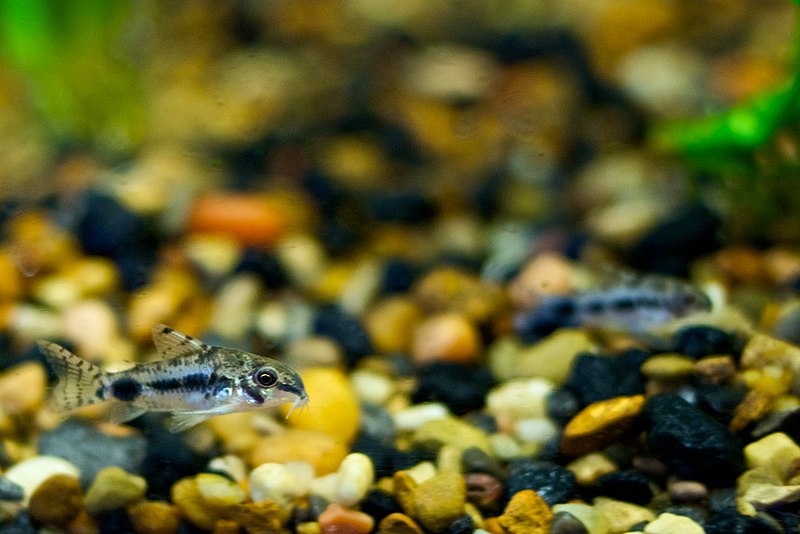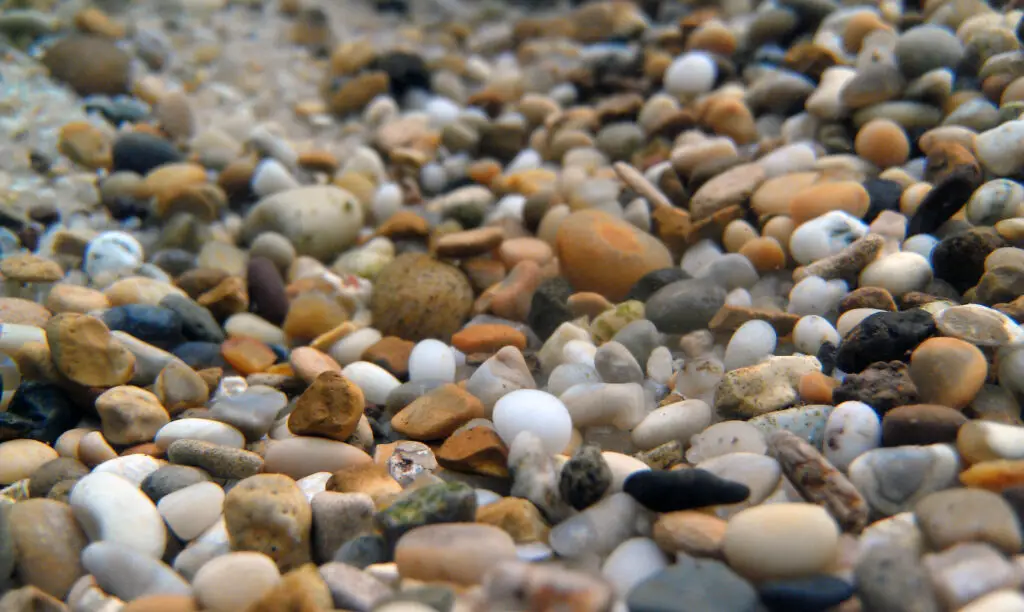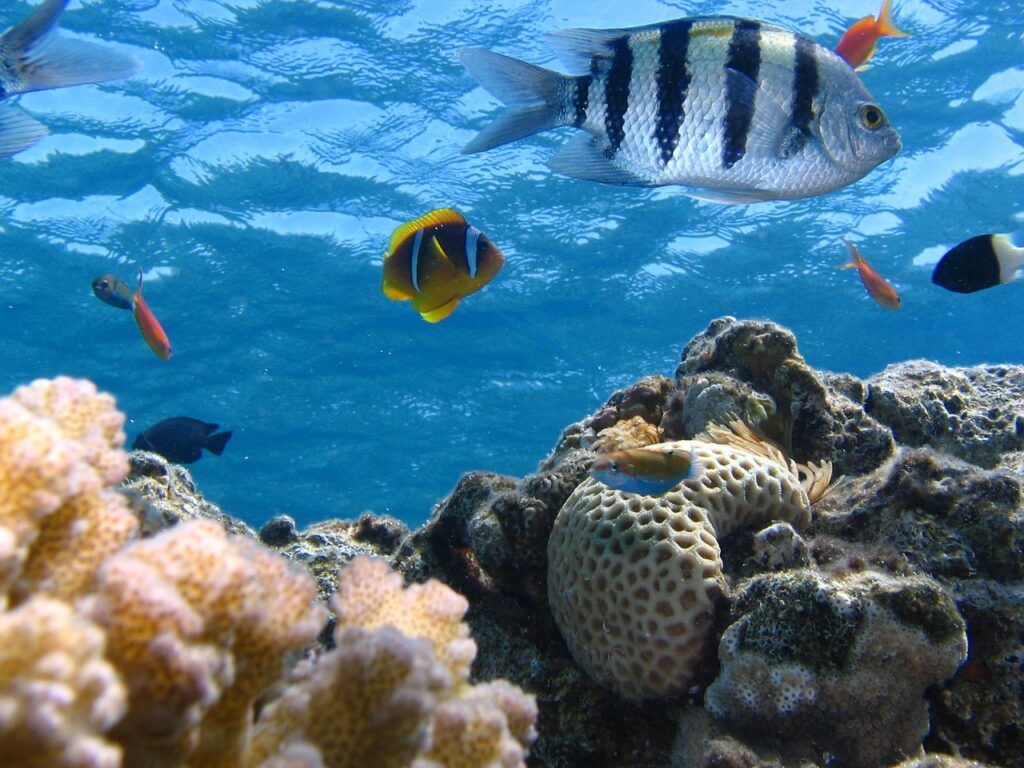Introduction
If you have cory catfish in your aquarium, knowing how to look after them and how to tell when they are unwell is critical, because otherwise you may end up with an aquarium full of dead fish on your hands. However, it isn’t always easy to work out when something is wrong, or how serious it is.
There are a few possible explanations for a cory catfish looking bloated, including the fish eating too much, and the fish carrying eggs. Both of these things will cause the fish to swell up around its middle, sometimes to enormous sizes. Cory catfish can also suffer from certain diseases that may cause bloating.
In this article, we’re going to explore the top causes of a catfish being overweight, and look at what warning signs you should be aware of. We’ll also look at how to tell whether your fish is simply fat, and whether it’s carrying eggs.
Why Is My Catfish Bloated?
Quite a few things can cause a catfish to look bloated, and some are much more dangerous than others. It is important to check on your fish regularly to determine whether they are overweight, or whether something is wrong with them.
Here are a few of the common causes of bloating among cory catfish.
1) Swim bladder disease: this disease occurs when your fish’s swim bladder (a buoyant sac that helps your fish stay upright) swells up. You may notice that your fish is particularly bloated around the bladder, which is in the center of the fish’s body. Other parts of the body will not be swollen. If caught early, this disease can be treated and the fish will fully recover.
2) Dropsy: an infection that causes the fish’s cells to swell up, dropsy is hard to treat and can be fatal in just a few days. It is generally caused by poor water conditions, stress, parasites, genetics, or bacteria. Your fish may take on an appearance a bit like a pinecone if it is suffering from dropsy.
3) A blockage: sometimes, a catfish will pick up bits of substrate along with its food, since it often feeds along the bottom. You should avoid using substrates with pebbles that might be swallowed. A blockage will generally be fatal to a catfish.
4) Internal parasites: if your fish has internal parasites, it may swell up because of them. This usually happens around the fish’s belly, rather than on other parts. Worms can easily infect catfish, and are generally fairly easy to treat.
5) Constipation: if your fish’s diet doesn’t have enough fiber in it, it is at risk of getting constipation. This will cause swelling as food clogs up the fish’s intestines. Make changes to your fish’s diet to increase the fiber, and it should recover.
How Do You Tell If A Cory Catfish Is Dying?
You can usually tell if a catfish is dying because it will show signs like lethargy, lack of appetite, or gasping at the surface. You might see your fish refuse to eat, or it may stop swimming and just drift in the tank. Sometimes, its gills will discolor.
Depending on the cause of death, you may see white spots on its body or cloudy mucus, although these are usually associated with bacterial or parasitic infections. A fish swimming upside down may also be close to death, and a fish that cannot swim straight may be in danger too.
Always look out for these signs, and step in as quickly as you can. Early diagnosis and quick intervention may save your fish in some cases, although many fish will die fast, as they rarely show signs of being sick until they are very sick.
If one fish in your tank has died, check on the others to see if the problems are widespread. Often, whatever has killed the first is at risk of affecting the other fish too.
Can Cory Catfish Be Overfed?
Yes, you can certainly overfeed cory catfish, and this will lead to bloating and swelling. These fish are hungry and will gladly eat any food you put into the aquarium, so it’s important to know how much to feed them.
Overfeeding your fish is not a good idea; it is likely to make them sick and could cause all sorts of health problems. Find out the recommended amount of food for your fish each day, and use this to determine how much food you should give them.
If you find that your fish are not eating all of the food within about 15 minutes of adding it to the tank, you should reduce how much you offer, as this is a sign that the fish are not hungry. The less enthusiasm the fish show for the food you offer, the more likely it is that they are getting too much food.
Is My Corydora Carrying Eggs?
Sometimes, your fish swelling up is a sign that it is carrying eggs. If you have seen a male following a female around a lot, there is a high chance that this is the case.
A female corydora that is carrying eggs can get very big indeed, so be aware of this if one of your catfish has suddenly swelled up and seems huge. The swelling will mostly appear around the abdomen, rather than at the front of the body, where fat sometimes lingers.
The female may also develop a black or red spot around the abdomen area, which will get brighter as the eggs develop. You may notice that the female is constantly looking for nests, exploring any available caves. She is almost certainly looking for a suitable lay site in this case.
Conclusion
It can be tricky to determine why your cory catfish is bloated, so make sure you are exploring each of these possible explanations. If you think your fish is sick and it shows signs of lethargy, you need to figure out what has caused the illness and treat it quickly. If not, check whether your fish is pregnant or if you might be feeding it too much.



